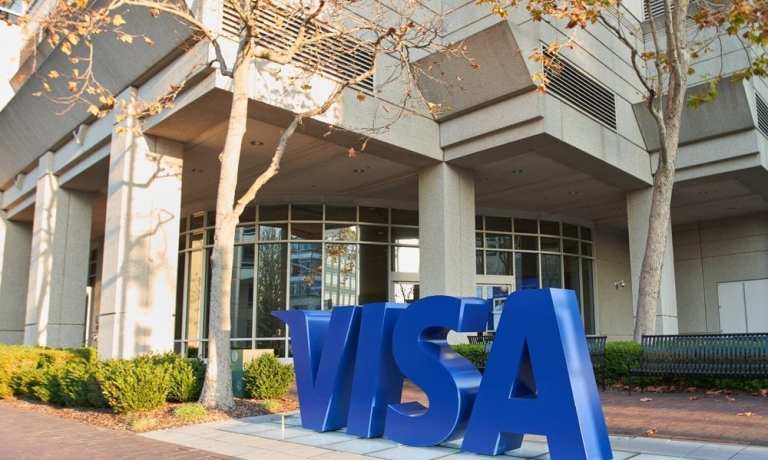
Small businesses, it is often said, form the backbone of the American economy, and by the numbers that is a hard statement to argue with. Of the 28 or so million firms in the United States, 99 percent are classified as small businesses and roughly 58.9 million people — 47.5 percent of the American labor force — are employed by a small to medium-size business (SMB).
But for all their importance, building a successful small business is a remarkably difficult undertaking, and the attrition rate is high. About 20 percent of SMBs fail within their first year, according to the U.S. Department of Labor Statistics, and about 50 percent fail within five years. Those odds can be quite daunting.
Which is why, Visa Senior Director of Social Impact Hugh Norton told PYMNTS, Visa is hoping to boost those odds of success starting today — with the launch of Practical Business Skills, Visa’s first-ever one-stop educational portal for small business owners.
“We’ve had a successful consumer education program at Visa and we wanted to build off of that with a business skills program focused on helping growth-minded entrepreneurs start, manage and expand their companies over time,” he said. “And the end of the day we want to help more businesses that can grow, thrive and become more resilient.”
The Practical Business Skills rollout is happening concurrently today (Sept. 24) with a She’s Next, Empowered by Visa event in Washington, D.C. — and the pairing is not coincidental, according to Visa. The two programs serve a single goal from different angles: making the world of entrepreneurship a more expansive and inclusive place by putting the right tools in the right hands to help SMBs flourish.
Practical Solutions For Every Small Business
What most small business owners don’t know on the start of their first day, but know quite well by the end of it, according to Norton, is that running a small business is a remarkably complicated endeavor from end to end, and in a lot of ways they never anticipated before starting up. What Visa learned from talking to scores of SMB owners while designing Practical Business Solutions was that most entrepreneurs really encounter all of that complexity totally blind with no education or preparation for it.
And while there is something to be said for learning on the job and education by experience, the goal was to design a smoother path for SMBs that offered an easy guide through the universal and common issues they all face.
“We really tried to come up with a wide base of knowledge — so overall it offers a total of 47 different educational modules that are then broken down into three main categories: starting, maintaining or growing a business,” Norton said.
On top of those modules, he said, the site also offers up a series of additional general purpose tools including form templates and wizards to help fill them out, business plan tutorials, a profit and loss calculator, startup cost estimators and instructions on how to do a break-even analysis. The challenge when designing for a segment as diverse as SMBs, he noted, is to find those really universal pain points that all such businesses share — and start building to relieve them.
“Whether you are making jam at your kitchen table and selling it online, or running a small grocery store, you are going to need a budget and a business plan,” he said. “So we approached it from that kind of universal standpoint.”
And while the site aims to have something for every small business owner at every phase of their ownership journey, Norton did note that as of now, the main focus of the materials is for firms in their first few years of operations. But, he said, Practical Business solutions is also designed, at base, to be a dynamic program with content that is expanding over time, in response to SMB needs.
“I think that as we grow the program over time with the content we will plan on focusing on greater specifics and on diving into topic areas that are more relevant for particular types of business owners,” Norton said.
Because the challenges for business owners are myriad, even under ideal conditions, and often the difference between success and failure is knowing how best to navigate challenges.
Plus, as Visa’s She’s Next event in D.C. calls out, not all entrepreneurs are working under ideal conditions.
Building a More Inclusive Entrepreneurial World
The good news in the world of equal opportunity is that there are more female entrepreneurs than ever. The rate of new women entrepreneurs has increased by 15.4 percent in the last three years.
The not-so-good news is that a world that is equalizing isn’t the same as one that is equal. Eighty-nine percent of women in Washington, D.C. said they encountered difficulty obtaining the funding they needed to start their business, and many have noted the difficulty in building a network. In January 2019, Visa launched the She’s Next program to help tackle specific challenges women small business owners face by creating a connection point between female entrepreneurs and industry experts for education and networking opportunities that help deliver immediate impact for their business.
“Running a business requires daunting amounts of time, investment and dedication and while women are starting more and more businesses, they are finding new challenges that men haven’t always faced,” said Suzan Kereere, global head of merchant sales and acquiring, Visa. “As we scale She’s Next across the globe, our goal is simple: we want to help empower women with tools and resources to grow and advance the small businesses that are so essential to our economies.”
Earlier this year, Visa launched She’s Next with workshops in New York, Atlanta and Cape Town, South Africa at the World Economic Forum in Africa.